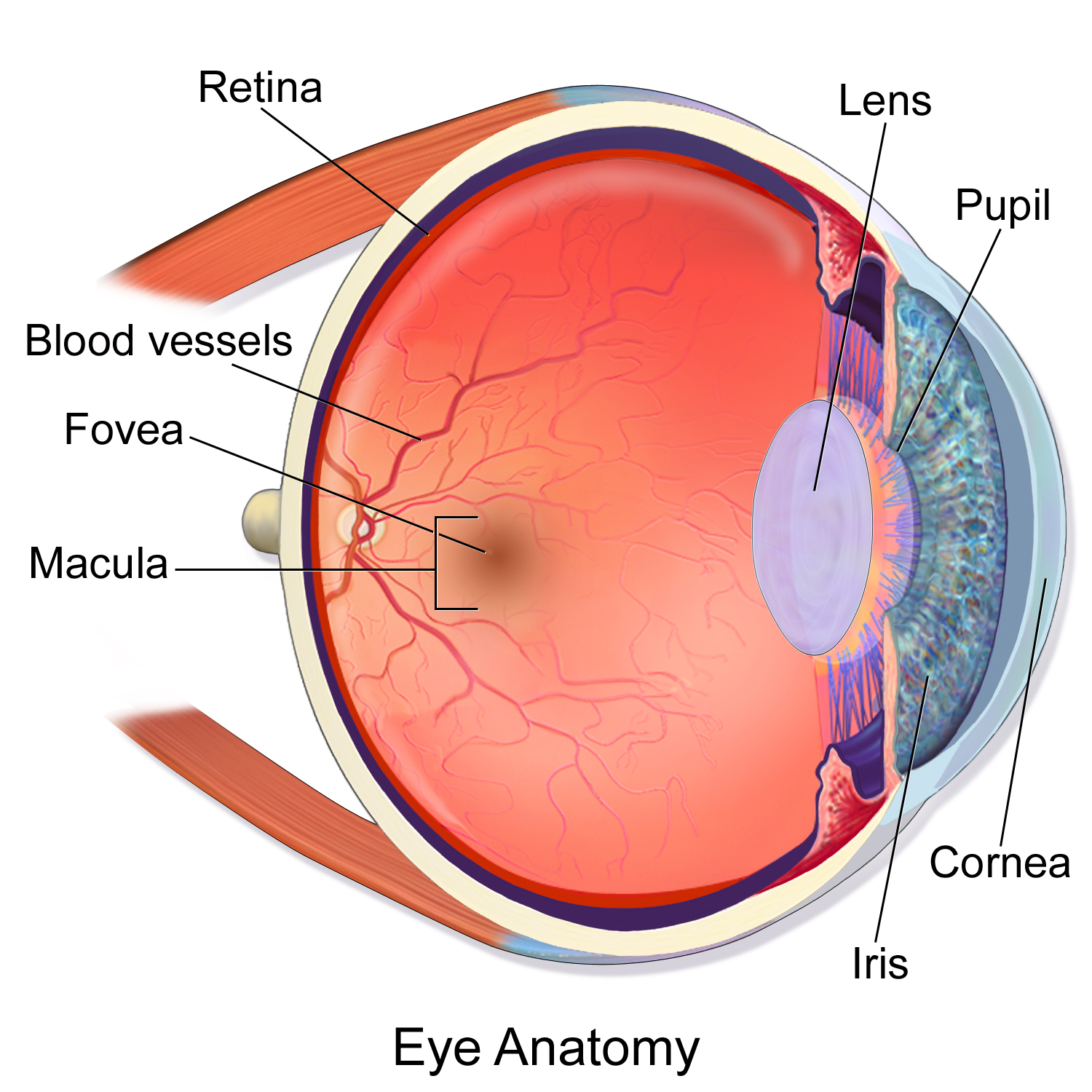
Blausen.com staff (2014). "Medical gallery of Blausen Medical 2014". WikiJournal of Medicine 1 (2). DOI:10.15347/wjm/2014.010. ISSN 2002-4436.
Just as there are many nutrients recommended for eye health, which ingredients to take depends on which part of the eye you are trying to support with eye vitamin supplements.
The cornea is the transparent structure that allows light to pass through that is located in the front of the eye. The inside of the cornea is lined by endothelial cells, which can become lost or damaged due to a hereditary condition known as Fuchs Dystrophy. Some studies suggest that taking oxidation hastens the course of Fuchs dystrophy and that antioxidant eye vitamins can slow this condition. Ingredients that may be beneficial include:
Alpha Lipoic Acid
Astaxanthin
Bilberry extract European
Black Currant
Ginkgo biloba
Grapeseed extract
Lutein
N-acetyl-L-cysteine
Quercetin
Rutin
Taurine
Turmeric
Zeaxanthin
The lens of the eye is located inside the eye. This lens is like clear gelatin early in life, but turns white, yellow or brown with age and disease. Unfortunately, despite optimistic attempts at intervention, no reputable studies have shown eye vitamins to slow the progress of this hardening and discoloration of the lens, which is known as cataract formation. The best recommendations are to avoid injury, eat a healthy diet, and if you are diabetic, to control your blood sugars.
The macula is a small, circular area that is part of the retina in the back of the eye. Within the macula is the fovea, a tiny indentation that is packed full of cone cells that process the sharpest aspects of central vision.

Blausen.com staff (2014). "Medical gallery of Blausen Medical 2014". WikiJournal of Medicine 1 (2). DOI:10.15347/wjm/2014.010. ISSN 2002-4436.
The macula gets its nourishment from the underlying layer below the retina that is known as the choroid. Nutrients trickle up from below. To maintain quality vision throughout life, it is important that the macula receive enough lutein and zeaxanthin. These carotenoids are the pigmented molecules that are found in brightly colored fruits and vegetables. Lutein and zeaxanthin perform many important functions for the retina:
They act as antioxidants.
They preferentially absorb blue light.
They provide healthy retinal pigment, which is measured as macular pigment optical density.
Most nutritional supplements provide lutein and zeaxanthin from marigold flowers and paprika. When choosing a lutein and zeaxanthin supplement, seek one from a trusted, manufacturer with a sterling record of quality and independent laboratory analysis. Because these are very expensive compounds, testing often reveals that the quantity of ingredients is far below what is listed on the product label. GMP certification is not enough of a quality guarantee.
The macula can also be affected by an aging condition known as Age-Related Macular Degeneration, or AMD. For this condition, there are a specific set of six ingredients that are recommended at minimum, based upon studies by the National Eye Institute, known as AREDS and AREDS 2.
The more recent study, AREDS 2 concluded:
A modified AREDS Formula with both Lutein and Zeaxanthin, but without beta-carotene, was 18% more effective than AREDS1.
Lutein and Zeaxanthin absorption was improved when beta-carotene was removed from the formula.
Beta carotene was again proven to increase lung cancer in former smokers. No significant decrease in benefit was found with 25 mg Zinc versus 80 mg.
Standard Omega 3s with predominantly EPA were not found to be beneficial in Grade 3 and 4 macular degeneration patients.
Some common national brands of AREDS 2 eye vitamins contain 80 mg of zinc, despite the study's conclusions. When seeking an AREDS 2 eye vitamin, you may prefer those that contain 25-40 mg zinc (copper is reduced as zinc is reduced) for the lower side effect profile and enhanced tolerability.
For more information, The Natural Medicines Online Database is an authoritative resource that is highly recommended. It requires an annual subscription.